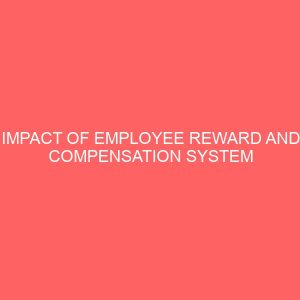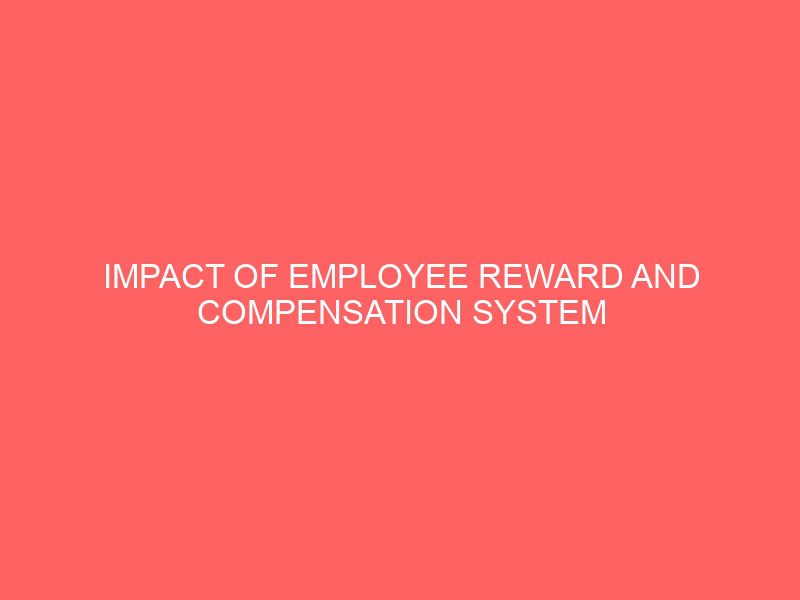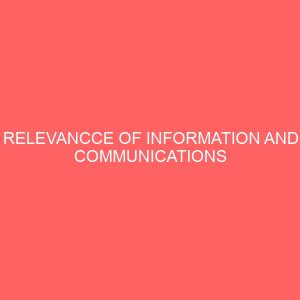Description
CHAPTER ONE
1.1 INTRODUCTION
Contemporary organisations deal with a number of challenges in order to remain competitive and gain sustainable competitive advantage. Especially after the rise of globalisation, challenges to related employee retention have increased as companies now manage employees belonging to different nations having different cultural backgrounds. Due to rise in telecommunication technology and internet, the awareness of the consumers with respect to product information and standard business practices as well as regarding their rights has increased, leading to change in factors of buying decisions (Torrington et al. 2009).Retaining talent and high quality employee has been considered as one of the long term sustainable competitive advantage but in modern business environment, it has become a challenge for companies (Armstrong2013).Within this context, organisations can gain competitive advantage if the employees increase their productivity leading to increase in organisational productivity (Donald and Gail 2001).
Reward systems have been identified as one of the most effective factors to maximize employee productivity (Armstrong 2013). The reward system in an organisation is a programme that is developed to provide appreciation for high performers and provide incentive for low performers to increase their performance. The purpose of the reward system according Griffin and Moorhead is to ?attract, retain, and motivate qualified employees?(2013). The reward system typically is based on the expectations of management of the organisation from its employees and the rewards that they are willing to give to employees who meet or exceed these expectations. Thus, reward system can shape the behaviour of employees towards the organisation and their jobs. Organisations can use this approach to shape favourable employee behaviour.
Organizations provide rewards to members in the form of wages and salaries, promotions, long service awards and certificates, end of the year bonus and other fringe benefits. These rewards are to motivate behaviour that will contribute to the achievement of the goals of organizations.
The questions that readily come to mind are, what sort of behaviour does an organization want? How can reward process promote that behaviour? What motivates an organization to design reward packages for the employees? Nearly all organizations invest in the provision of rewards to motivate their employees in order to get the desired results. According to equity theory, the adequacy of such rewards will to a large extent depend on the value the employees place on the inputs they bring to the job in the form of education, experience, training, time, effort etc., with the outcomes (rewards) such as pay, promotions, praises and recognitions they receive as a result of performing the job (Fajana, 2002). Individuals who feel that they are being rewarded inequitably are unlikely to be highly motivated to perform effectively and are much more prone to stay away from work (absenteeism) or to leave the organization altogether (turn over) (Maduabum, 2006). This could spell doom for the organization. If the rate at which people are leaving the organization or avoiding joining the organization is so high, the organization must investigate the underlying causes and may be a function of negative job attitudes, low job satisfaction and the state of the labour market (Perry, 2006).
According to Sheilds and associates (2015), rewards should be based on differing needs of employees. The needs of some employees can be fulfilled by cash rewards while others are more interested in other incentives such as house, car, paid holidays, etc. a reward system should have an effective combination of both monetary and non-monetary rewards and incentives in order to satisfy the needs and expectations of employees towards management and reward system. Positive impact on employee productivity can only be achieved if reward system meets the needs and expectations of employees. Typically, a rewards system is based on the notion of ?pay for performance? which may take the form of promotions, commission, bonus, awards, etc. Typical non-financial incentives are performance appreciation, social recognition, improved working conditions, diversification in job description, increasing responsibilities, etc. (Garg and Rastogi2006). Torrington, and associates (2009) used the term non-material rewards for non-financial or non-monetary rewards and concluded that they increase the overall job satisfaction of the workforce in an organisation.
The banking sector plays a vital role in the economy and each bank, in any community it is situated aids in proper management of financial matters and ensure availability of funds. All glory attached, is to the management of such bank and of course the timely and effective contributions of its employees.
Hence, this study using Skye Bank Plc, Eruwa as its case study tends to examine the impact of reward system on organizational/employees productivity; the base for good reward and compensation structure; employee expectations at different levels and how the compensation structure is based on performance of individual(s) or job requirements of employees.
The study therefore intends to draw the attention of management of organizations to the use for effective and efficient reward and compensation system capable of improving employees? performance and enhance organizational productivity.
1.2 STATEMENT OF PROBLEM
Some organization view employees as extra cost as well as a liability to their organization as a result, most of these organizations do not remunerate their employees adequately. In most cases, remunerations of employees are not commensurate with their inputs to such organizations.Rather than organizations to paying attention to how labour will be rewarded appropriately, some organizations concentrate more on other resources like materials, machines and money thereby giving little or no considerations for labour.
Thesehave led to the inability of most organizations to attain their set objectives because employees who ought to drive the attainment of these objectives are not adequately motivated hence employees?performances are often below standard.
It is of this view that this study tends to examine how effective reward system can affect the performance of employees in an organization.
1.3 OBJECTIVES OF THE STUDY
The broad of this study is to examine the impact (if any) of reward or compensation system on employees productivity and general organizational performance. The specific objectives therefore are to:
i. to identify the various ways through which organizations can encourage or reward their employees
ii. to assess the effects of employees job allowance on their performance
iii. to evaluate the relationship between organization rewards and employees performance.
iv. to evaluate the relationship between conditions (such as: promotion, long-service award, retirement benefits, pension and gratuity, employees? loan assistance, etc.) and employees? performance
1.4 Research of the Questions
i. what are the ways through which organisations can encourage or reward their employees?
ii. what are the effects of employee?s job allowance on their performance?
iii. is there any significant relationship between reward system and employees? performance?
iv. does employees? job allowance affect their performance?
1.5 SCOPE OF THE STUDY
Even though employees reward and compensation system is just one of the instruments used to ensure organizational and workers? productivity, the study strictly concerns itself with reward and compensation, its system and its impact in enhancing organizational productivity, profitability and employee performance.
In addition, this study is to examine the impact of reward systems on the performance of employee in Skye Bank Plc Eruwa. This show that this study neither cover every organization in the banking industry neither does it cover every Skye banks but Skye Bank Plc Eruwa, Oyo state.
1.6 SIGNIFICANCE OF THE RESEARCH
This research is significant in the following ways:
Firstly, it holds a lot of benefit to ensure continuous existence and survival of organizations. The study will be of great benefit to managers or the human capital department of an organization regarding the identification and adoption of effective reward and compensation system.
Secondly, the study clarifies the argument on whether effective reward and compensation system add value to organizational activities which enables organization take profitable sides or whether to compensate employees or not.
Thirdly, this study will serve as a reference material and academic development material to any individual or department who may like to embark or further on the topic in future.
1.7 LIMITATION OF THE STUDY
I. Problem of Privacy: This is privacy on the part of the organization that is been researched. In Nigeria, many organizations do not disclose the true information about their organization.
II. Cost of Conducting study: The cost of conducting the research is high and the students cannot go beyond their financial capability
III. Time constraints: Students are faced with the problem of time limitation as students have to limit the scope of the study due to inadequate time in their expense.
1.8 OPERATIONAL DEFINITION OF TERMS
1. Compensation: Compensation is all form of financial returns, tangible services and benefits and employee receives as part of an employment relationship
2. Management: This is the process of planning, organizing, leading and controlling the works of organization to meet its objectives.
3. Industry: This is a group of firms that engage in the production of smaller products or services
4. Reward: This is the core-face of an employment relationship. It consists of organizational integrated policies, processes and practices for rewarding its employees in accordance with their contribution, skills competence and the market worth.
5. Productivity: Productivity is the output unit/per labour input into the production process
6. Remuneration: This is the financial reward accruing to employees for his/her performance in an organization.
7. Motivation: is an inner state that energises, activates or moves and directs behavior towards goals.
8. Pay structure: It is a framework for managing base pay progression over time for employee benefit
9. Policy: It is the organization guiding principles that regulates its operations and activities
10. Job Evaluation: Is the systematic process for establishing the relative work of job within an organization
11. Extrinsic Reward: It is a tangible and visible reward given to an individual or an employee for achieving something. They usually have monetary value such as a salary hike, bonus, award, or public recognition.
12. Reward strategy: this is the definition of the intention of the organization. On how its reward, policies and processes should developed to meet business requirements.
1.9 HISTORICAL BACKGROUND OF SKYE BANK PLC, ERUWA
Skye bank Plc, Eruwa came into existence as a result of 2006 consolidation and capitalization policy of the Central Bank of Nigeria (C.B.N) which reduced the number of commercial bank in Nigeria from about 84 to 25 banks through merger and acquisition.
Skye bank is merged of 5 (five) banks namely Prudent bank, Co-operative bank, Reliance bank, Bond bank and Eco International bank.
Formally, it was a co-operative bank which has been in existence in Eruwa town for over 25 years. It has a lot of products and services that are beneficial to all cadre of customers and all these products and services are designed towards saying yes to dreams and needs of Eruwa work place and populace.
Skye bank offers services and products to all of their customers such services are: Finance, Easy Loan, Money transfer, Skye auto lease (for car loan), Skye Edu care (for overseers in education), Skye credit (for access to ATM), Skye lifestyle (to enhance individual lifestyle). Skye international banking as well as investment retail, co-operate banking to all customers both local and international to mention but a few.
1.10 DEPARTMENTS IN SKYE BANK PLC, ERUWA
i. Business Development Department
ii. Co-operate Resources Department
iii. Operation Department
iv. Inspectorate Department







